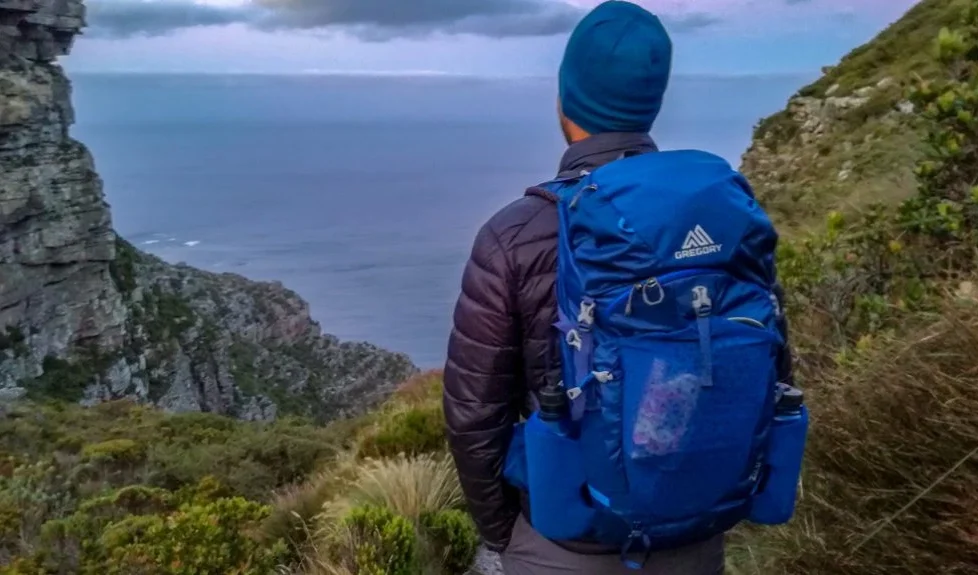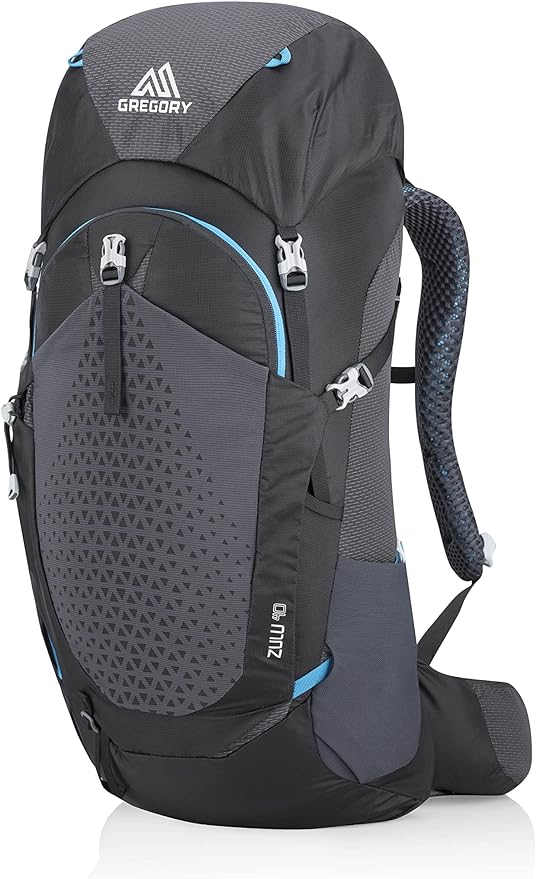Gregory Zulu 40 Full Review

The Gregory Zulu 40 is a very sturdy device that is intended for heavy weights up to 35 pounds. The stiffness of the suspension system, coupled with its precise functioning, demonstrates that this is a dependable choice. Because of the cushioning in the shoulder straps and hip belt, the Zulu is easy to carry with heavyweights. The built-in ventilation system keeps perspiration at bay in the back. However, mobility is limited due to the suspension system’s stiffness. As a result, Gregory Zulu is more suited to trails than alpine scrambles.

Comfortable
Lightweight
Durable
Versatile
Limited color options
Specific fit
Fewer pockets
40 liters
CrossFlo DTS
3.13 lbs (1.42 kg)
Nylon
The Cross Flo DTS suspension system of the Gregory Zulu 40 is made up of an HDPE frame sheet and a spring wire “X” frame with a trampoline-style mesh rear panel. The shoulder straps are attached to a yoke that is pulled up on the wireframe above the crossing point that creates the “X.” As weights press down on the shoulder harness, this one-of-a-kind mechanism causes stress to build up in the frame.
As a consequence, since the mesh back panel is enclosed, the air space above the lumbar area is maintained suitably. The shoulder strap and the hip belt have the greatest cushioning. The characteristics improve the pack’s capacity to carry larger weights while yet being comfortable to wear. The pack’s movement with the user, on the other hand, is not as fluid. The shoulder harness is not adjustable and is fixed. The Zulu, on the other hand, comes in three distinct sizes.
The pack’s steadiness is one of its most significant practical advantages. The pack’s stability is proven by its ability to compress. The inclusion of control straps at the hip belt is another source of Zulu’s stability. The dual-density hip belt distributes the weight evenly over the lower back.
The Gregory Zulu 40 lacks an extension sleeve, but the lid is spacious and has the standard zipped top pocket and underneath pockets. The face of the pack is covered by a stretch bucket pocket that is connected to the top compression straps. A U-shaped zipper runs all the way to the bottom of the pack for convenience. Stretch pockets are included on both sides of the bag. Each hip belt has its own pocket, one made of open mesh and the other of water-resistant nylon.
The Gregory Zulu 40 is made of 210d nylon in abrasion-prone regions of the body and 100d in others. This offers optimum weight bearing without sacrificing durability. The wire “X” frame has a diameter of 4 millimeters and is well-constructed. The stretch mesh utilized on the outer pockets is considerably denser, which is a positive indication for a fabric that is often snagged. The buckles are of more conventional size and style, avoiding the minimalist approach that many competing packs are taking these days.
Extras The inner hydration bladder sleeve and hang loop, top rope/compression strap, ice tool/trekking pole attachments, and a shoulder strap sunglass loop were all added to the Zulu 40.
I’m 6 feet tall, 165 pounds, and have a torso length of little less than 20 inches. After realizing that my 60L Osprey Aether pack was too large, I experimented with various 40L-capacity models. Zulu was my favorite since it was ideal for my overnight excursions and hostel hopping.
The straps and belt are simple to use. The cushioning, although not as substantial as that found in Gregory expedition packs, is enough for the weight intended to be carried. The top pocket is roomy and can easily accommodate food, a GPS, a headlamp, a first aid kit, and a map. The stack pocket comes in useful during heavy rains. I’ve had to use it many times, and it’s always worked well.
Smaller or heavier items should not be placed in the open top pocket since they may tumble out when the inverted U-flap is opened. They’d be better placed in the rain cover pocket, the top “brain” pocket or the two tiny hip-belt zipped pockets. The Zulu offers good dual access and eliminates the requirement for a separate compartment. The elastic pocket stitched to the front opening flap is ideal for storing a jacket, vest, or hat.
The function of the top straps is to keep the top “brain” compartment in place while vertically compressing the pack. Each side has two straps that securely keep the side stretch pockets in place. As a result, the side stretch pockets are ineffective for carrying things that are often used, such as water bottles. A stove, on the other hand, might be housed in those pockets.
The Zulu features a 2L water bladder pocket in the main compartment and a tiny access hole in the top rear of the pack. But I don’t enjoy having my water so near to my clothing and sleeping bag. As a result, I utilize a tiny bladder and a hose system in one of the side stretch pockets, which works well for me.
Ice axes or poles may also be connected to the front of the pack, which has bottom loops and top elastic cords.
The Medium (40L) Zulu fits me nicely, and I can easily carry 15 pounds in it. This is made possible by the X-frame design, suspended mesh panel, medium thickness padding on the lower back, hip belt, and shoulder straps, as well as the load-lifter straps and sternum strap. I usually use Zulu as a day pack to carry my photography gear as well as my trekking gear. I carry 30 to 35 pounds, which the Zulu handles well. It’s an all-purpose bundle that I use all year. It may also be utilized for alpine touring. My only complaint is that the side pockets are useless for storing water.
The Zulu has proven to be an excellent choice for overnights and hostel hopping. As a result, users have given it 4 stars.
There are many others in the market that are really good when it comes to weight, carrying capacity, and many other features like Gregory Stout 75 which is excellent in its line if you looking for something easy on the pocket and user-friendly then you must check this.
Disclaimer: This page contains Affiliate Links to brand's websites. When you make purchases on their sites using these links, we may earn a commission on your purchase at no additional cost to you. (Disclamer)
